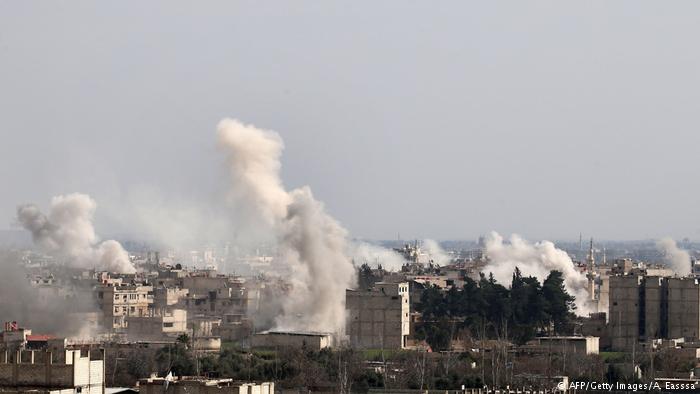With concerns that evidence could be disappearing from the site, questions remain as to how successful their fact-finding mission will be.
Alastair Hay, a professor of environmental toxicology at the University of Leeds, broke down the steps OPCW inspectors will take to gather evidence, and told DW why the mission isn’t a lost cause.
What evidence will the investigators try to collect?
OPCW inspectors will want to speak with victims about where they were when it the attack happened and what symptoms they experienced. If possible, they will also gather samples from deceased victims.
“You want to take samples where you can from victims. Neither blood nor urine samples are helpful if it’s an irritant like chlorine, but they’re very helpful if the likes of sarin had been used,” Hay explained.
They will also speak with doctors about how they treated victims. The symptoms and treatments help indicate what chemical substances could have been at play.
Investigators will also need to visit the attack site to try to recover remnants of the weapon used, as it will either have material remaining in it or have markings indicating what it may have been carrying.
They can also gather samples of concrete near the blast area to examine later in the lab. Clothing and footwear worn during the attack can also contain material that could aid their investigation.
Will they still be able to find evidence so long after the attack?
Despite the amount of time that has elapsed since the alleged attack, Hay said he believes investigators will still be able to gather enough evidence from the area.
Victims’ testimony will be key, as well as any samples that can be gathered from them, he added.
Chemicals blasted into the surrounding area can stay on surfaces like concrete for a long time. An attack using chlorine might be more difficult to ascertain from the surroundings since chlorine gas quickly dissipates.
They will be equipped with chemical agent monitors to detect the presence of chemicals, but the devices can only indicate families of chemicals and not which type was used.
What chemical agents will they be looking for?
Based on the images and videos posted on social media of the alleged attack, Hay said two different substances could have been at play: an irritant and a nerve agent.
Hay took particular note of the videos showing deceased victims with foam around their noses and mouths, saying they indicated the possible use of a nerve agent, like sarin gas.
“The people who died in the videos I saw looked as if something had been very rapid and they just had no chance to escape. That fits much more with a nerve agent,” he said.
Will they be able to know if the site’s been tampered with?
Hay said OPCW inspectors will be able to tell if evidence has been tampered with in the area.
They will be checking if the area at the blast site is too clean, as well as if the weapons or munitions are still intact.
“The Russians or others may very well be trying to clean up things — throwing dust everywhere and trying to make it look natural,” he said. “I think it may be challenging for the inspectors.”

